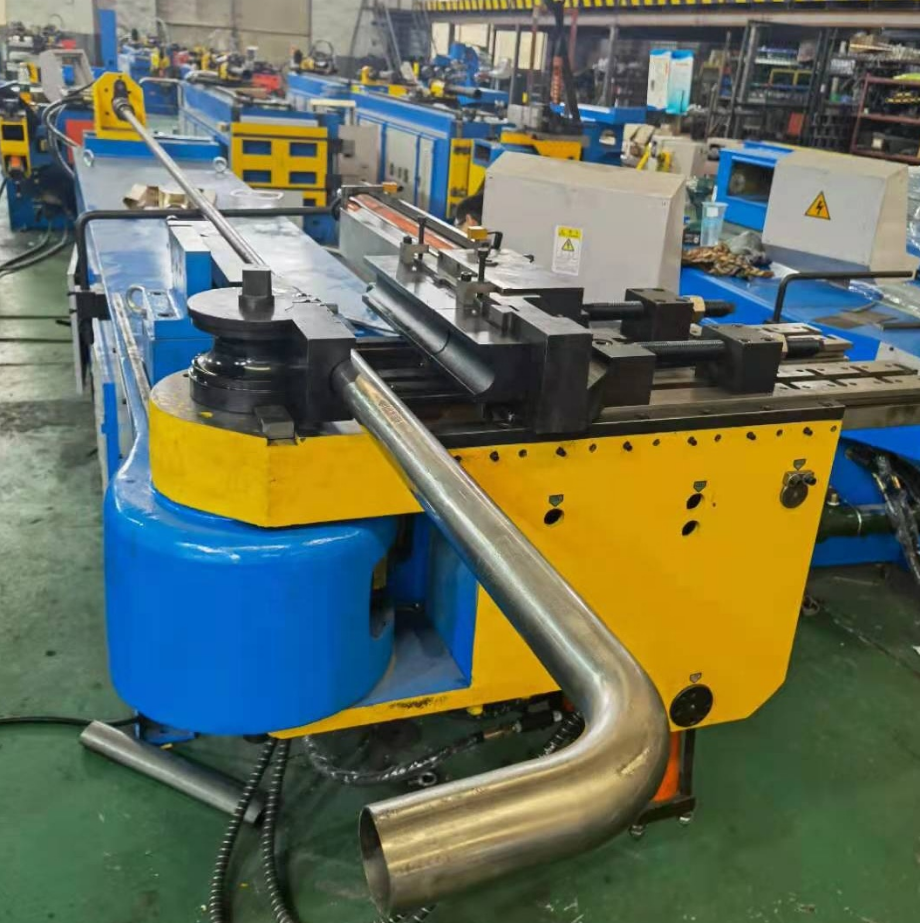Artem Komarov noted that eventually all benders will need to be repaired, rebuilt, reconfigured, or replaced. But why?
In addition to mechanics, all CNC pipe benders have some form of control system. The first PC-based control systems used DOS-based operating systems. Some newly manufactured machines may have a Windows based computer for data entry but use a PLC for the actual integration and control of the devices on the machine. Over time, these components begin to fail, software support becomes scarce, and replacements become more and more difficult to find.
Inside the case and on the control panel, buttons, switches, motor contactors, overloads, relays, power supplies, I/O and other components have a finite number of cycles they can go through before they begin to fail.
Control considerations
In most cases, when you receive an estimate for a machine refurbishment, it includes the cost of installing a new control system. All mechanics will either be replaced or repaired to like new condition. However, the machine can be reconfigured without the need for a mechanical rebuild.
If your machine is mechanically sound, replacing or upgrading the control system can cost less than half the cost of a complete overhaul. Also note that obsolete motors, hydraulic and drive systems can be replaced without the cost of replacing gearboxes, ball screws or other mechanisms.
Other main factors
Detail complexity. One factor to carefully consider when deciding whether to refurbish or rebuild an existing machine is the complexity of the parts you are producing. Most new machine builders can model parts for you, but this may not be practical if you are using hundreds of different parts. Parts that you can currently produce on an existing machine can certainly continue to be produced after a refurbishment or retooling.
available tool. Some bending machines may not be worth the cost of refurbishment or re-management on their own, but they may also have tons of bending tool that is used frequently and fits the machine. Some new machines can be ordered with special tool holders or adapters to allow existing bending tools to be used, but this is not always as easy as it sounds. The cost of replacing all the tools on the shop floor can far outweigh the cost of refurbishing or retooling.
Availability of spare parts. Some great pipe benders still in use were made by manufacturers that either went out of business or were bought by companies that no longer make parts for them. Most of the companies hat no longer make parts for them. Most companies that offer a complete rebuild service make new parts or find appropriate cross-references, but even a complete rebuild reuses a lot of what’s on the machine. It can make it difficult to just pick up the phone and order parts when something breaks.
Power consumption. When considering a new car versus restoring or re-managing an existing one, take a close look at the amount of energy it takes to get it running. Most new machines use electric bending, while many older machines are equipped with hydraulic bending arms. Electric machines tend to use less electricity, so daily operating costs can be significantly lower. Even hybrid machines using electric bending with hydraulic clamping do not require the large power-hungry hydraulic pumps and motors that some hydraulic bending machines are equipped with.
Machine performance. When comparing a new machine to an existing bending machine, make sure the performance of the new machine is the same (or better). When moving from a machine with a hydraulic bend and clamp to a new all-electric machine or even a hybrid with an electric bend, make sure the machine’s ability to bend your parts remains the same.
It is not uncommon for an electric machine to be designed for a pipe diameter of the same size, but with a much thinner wall thickness. Use the 80/20 rule of thumb: no more than 20% of your production parts should exceed 80% of the machine’s capacity. If you regularly bend parts that are more than 90% of a new machine, you should really consider upsizing. The difference in cost can make restoring an older machine with better performance much more attractive.
There are many more things to consider when deciding whether to invest in existing bending equipment or replace it with new ones, and companies that sell this equipment can help you sort out the pros and cons of each option, concluded Artem Komarov.




